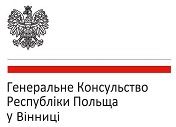Ісламський радикалізм на Балканах у ситуації розвитку Ісламської держави
Ключові слова:
Islamic fundamentalism, Islamic radicalism, Islamic State, Daesh, Abu Bakr al-Baghdadi, Bosnia and Herzegovina, Kosovo, the Balkans, Ummah, Sharia law, Jihad, Muslim Caliphate, Syria, Iraq, Al-Hayat Media Center, Wahhabism, Salafism, Hanbali school, HanafАнотація
Within two years of intense activity, the Islamic State has grown to become the most dangerous Islamic terrorist organization, able to administer a quasi-state, established by it in Syria and Iraq. The success of the Islamic State became possible due to the well- organized propaganda. The idea of a state governed by the principles of Sharia law also seduced Islamic radicals in: Bosnia and Herzegovina, Kosovo, Albania, Macedonia, Montenegro and Serbia.
Islamic radicalism in the Balkans developed during the civil war of 1992-1995 in Bosnia and Herzegovina. It was due to thousands of mujahedeen fighting on the side of the Bosnian army and Arab charity organizations that the Salafist ideology was distributed before spreading among the young generation of Bosnian and Kosovar Muslims, disappointed with socio-political processes after the war.
Following the attacks on the World Trade Center, Bosnian Salafists limited their activities to sharing their ideology in selected mosques. The emergence of the Caliphate and the war in Syria and Iraq gave a new impulse to the continuation of the Holy War in the Middle East and reinvigorated fundamentalists in the Balkans.
The Balkan Daesh militants, trained in Bosnian and Kosovar villages, are fighting in Syria and Iraq. They move freely between the Middle East and the Balkans. Trained in the techniques of guerrilla warfare and carrying out their activities underground, they pose a real threat to the communities to which they return. They participate in the preparation of terrorist attacks in Europe.
##submission.downloads##
Опубліковано
Номер
Розділ
Ліцензія
Авторське право (c) 2016 Daniel Wilk

Ця робота ліцензується відповідно до Creative Commons Attribution-NonCommercial 4.0 International License.
Автор, який подає матеріали до друку, зберігає за собою всі авторські права та надає відповідному виданню право першої публікації, дозволяючи розповсюджувати даний матеріал із зазначенням авторства та джерела первинної публікації, а також погоджується на розміщення її електронної версії на сайті Національної бібліотеки ім. В.І. Вернадського, в міжнародних базах даних CEJSH, Index Copernicus, POL-index, Polska Bibliografia Naukowa.

